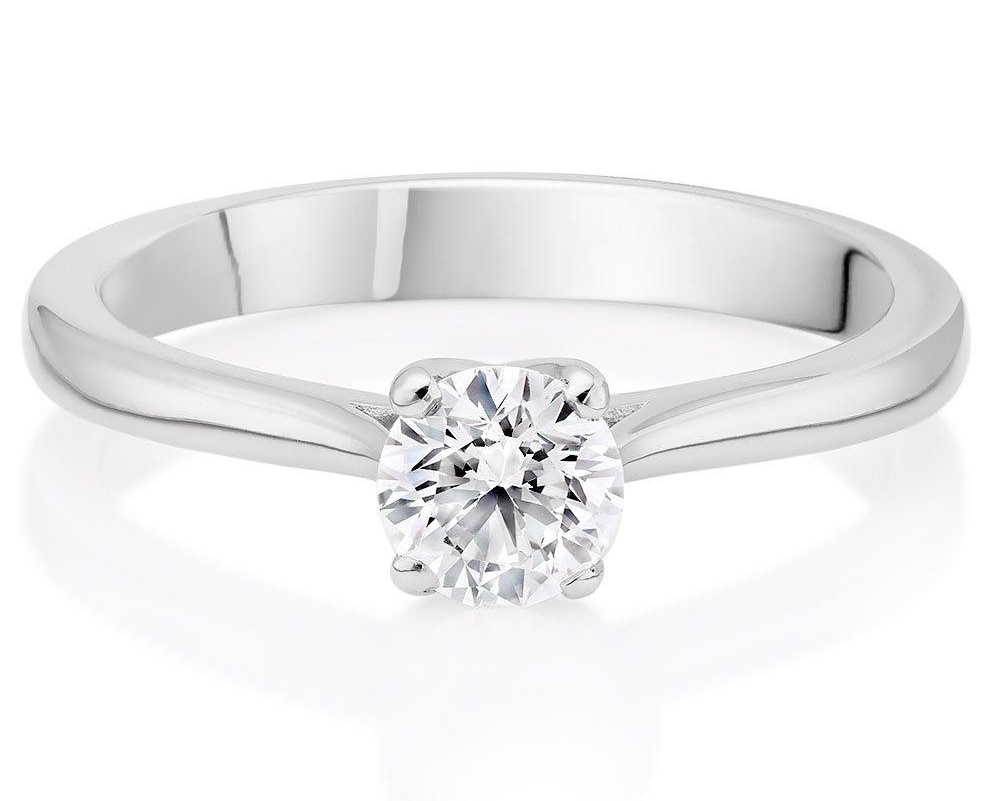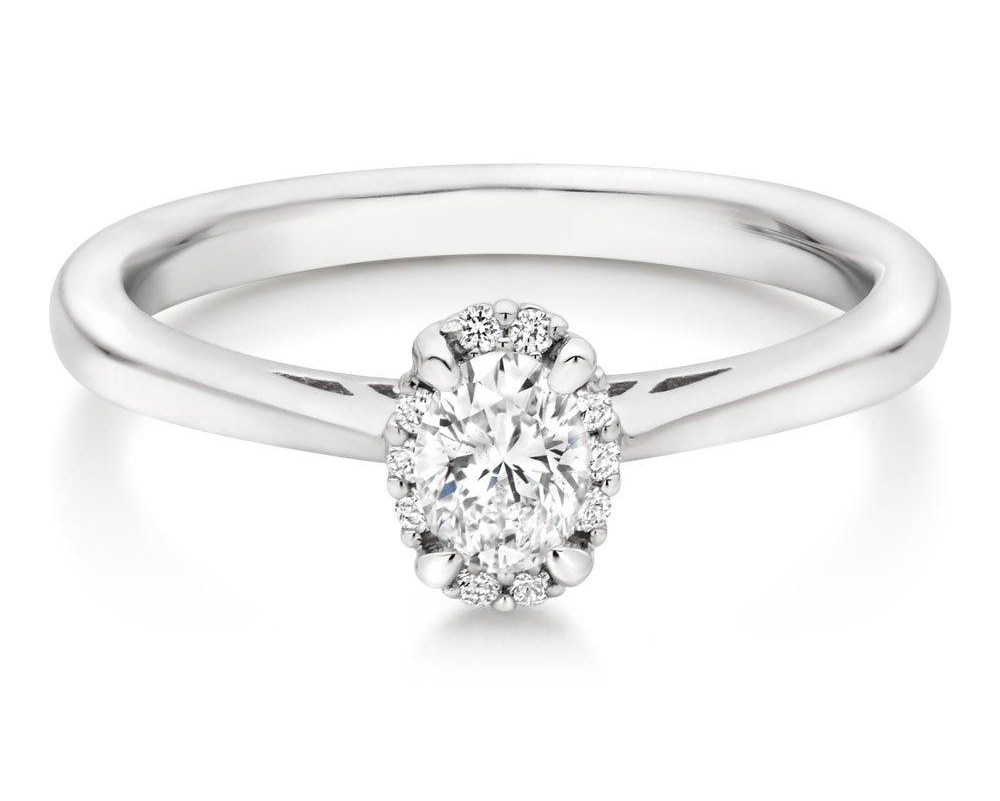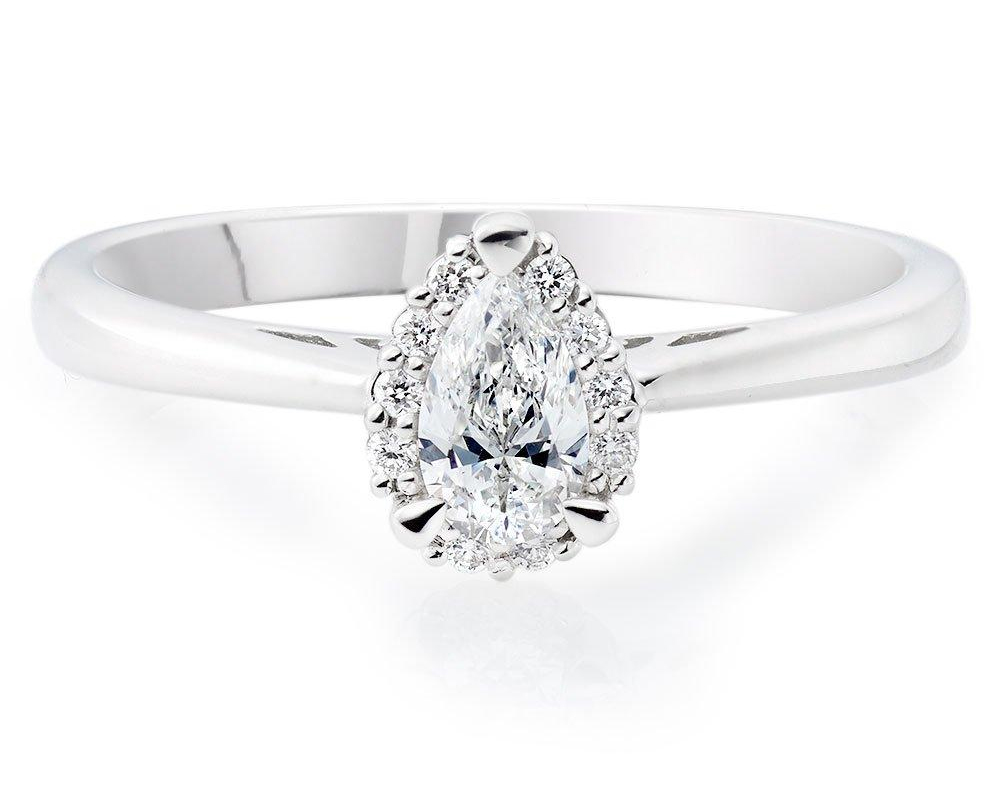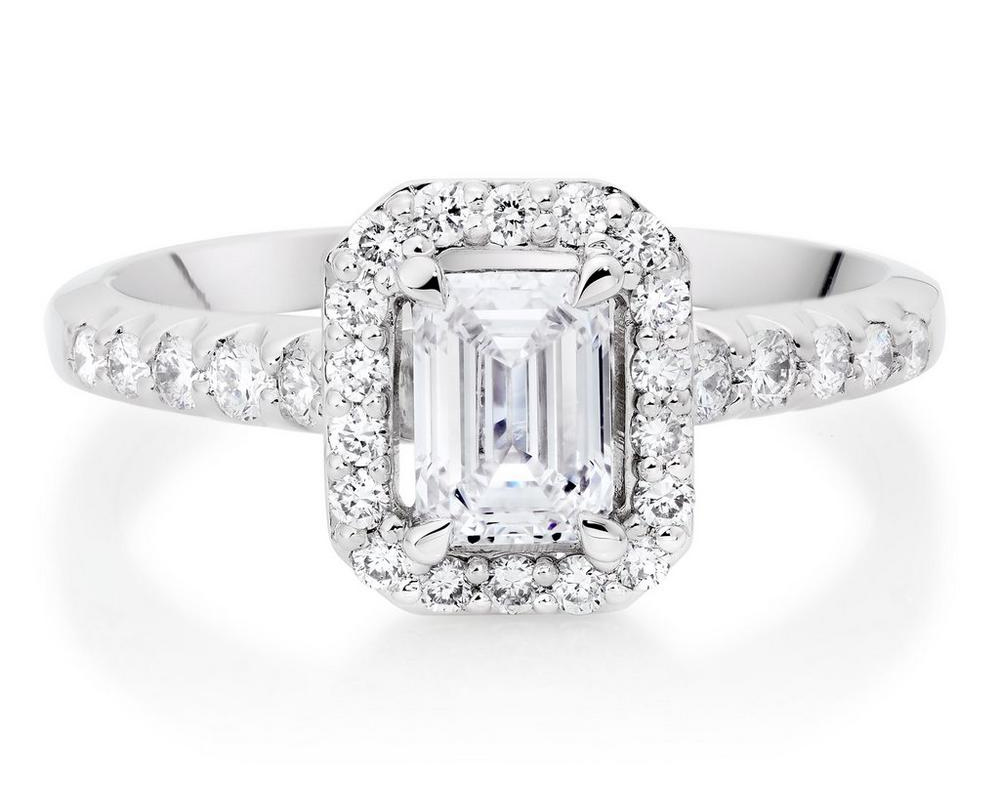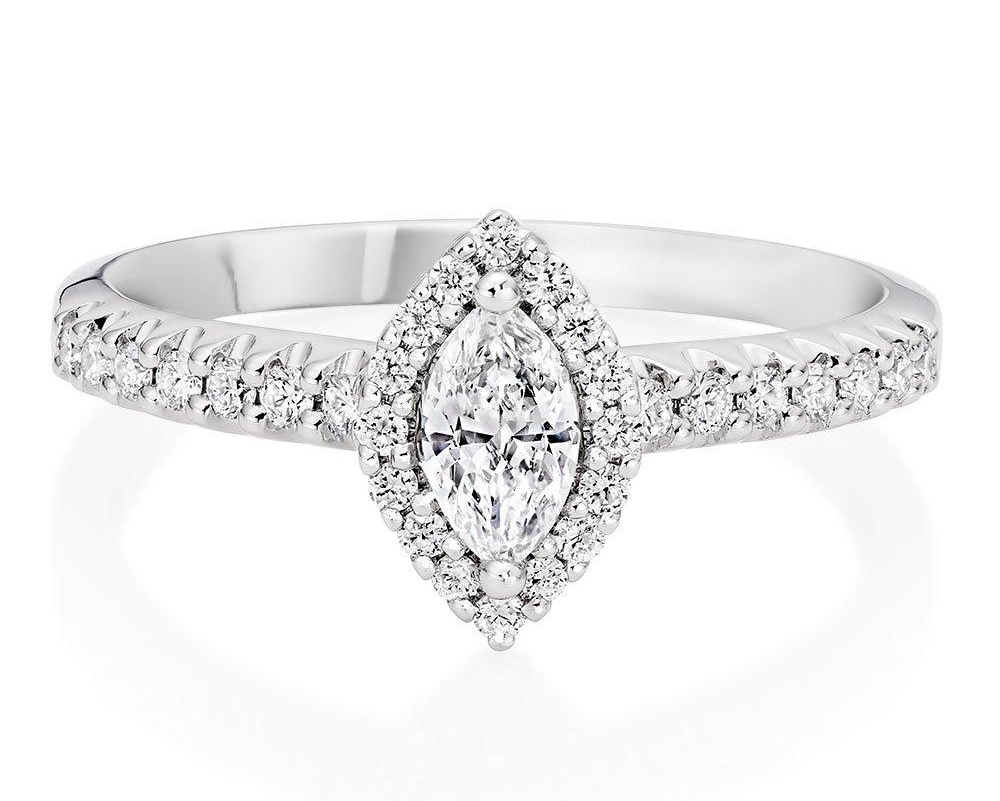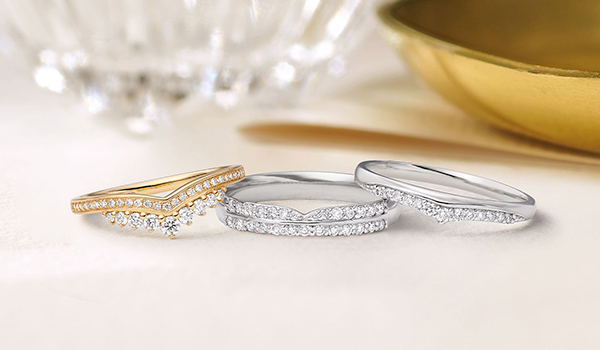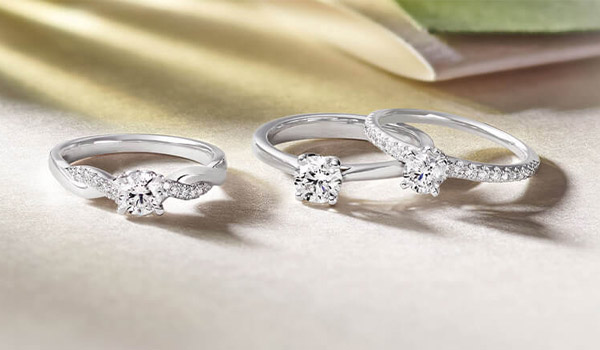Understanding the
diamond anatomy
When a rough diamond is cut to create its polished form, it’s made up of a faceted structure which helps it perform and sparkle its very best.

Table
The large facet in the centre and on the top of the diamond. The table plays a vital role in sparkle and can vary in size depending on the diamond’s cut.

Crown
The upper part of a diamond between the girdle and the table, made up of star facets, bezel facets and the upper girdle.

Star
The star facets are found around the table. They let a multitude of light through and shine in different directions to create more brilliance.

Bezel
Bezel facets sit next to the star facets around the diamond table. A round brilliant diamond has eight bezel facets that are ‘kite’ shaped and help to form the crown.

Upper Girdle
These are diamond facets that sit above the girdle, leading on to the bezel facets. They help to reflect fire and brilliance.

Girdle
The girdle is the thin perimeter that divides the crown from the pavilion. Round brilliant diamonds have faceted girdles to give greater transparency of the diamond.

Lower Girdle
Lower girdle facets sit just below the girdle and next to the pavilion. They help to reflect light into a multitude of directions.

Pavilion
The pavilion is the bottom half of a diamond. The facets within the pavilion help light bounce, enter and reflect through a diamond.

Culet
Found on the bottom of a diamond, the cutlet is the flat face at the base of the pavilion where the facets of the pavilion meet.
The diamond cutting techniques
The faceted structure of a polished diamond can be different depending on any inclusions and the size of its rough diamond form. There a three main cutting techniques that help to create the diamonds we know and love.
-

Brilliant Cut
One of the most popular cuts, the brilliant cut is made up of 57 or 58 kite and triangular facets. These facets radiate from the diamonds centre towards its girdle, fully optimising its brilliance and light return. Diamond shapes such as round brilliant, cushion, oval, marquise, pear and heart-shaped are all cut using the brilliant faceting style.
-

Step Cut
Resembling a set of stairs, the step cut showcases long and narrow four-sided facets in rows parallel to the girdle on both sides of the crown and pavilion. This faceting style is great for emphasising a diamond’s colour and clarity. The most common step cut is the emerald cut.
-

Mixed Cut
A cutting style that combines step cut and brilliant cut facets, mixed cuts have brilliant facets on the crown and step facets on the pavilion, or vice versa. You’ll most likely see this cutting pattern used a cushion or oval shaped diamond.
Which diamond shape to choose?
Thanks to its cutting technique, diamonds come in many different beautiful shapes and sizes. We’re here to help you find the one that’s perfect for you.










